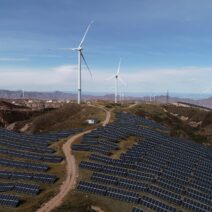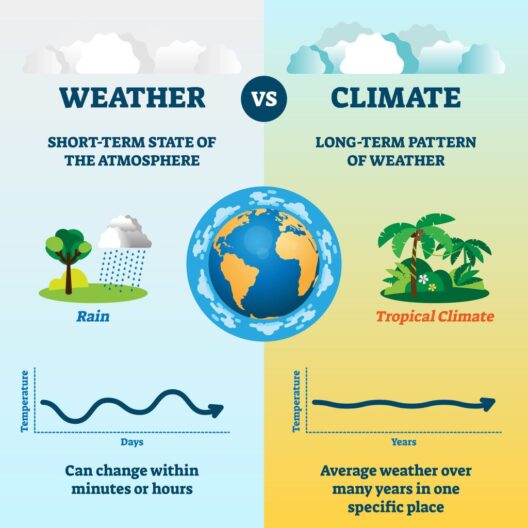Climate change—it’s a phrase that evokes significant urgency and deep concern across the globe, but how much of what we hear is factual, and how much is merely myth? As we work tirelessly to address the frequency and severity of climate-related disasters, it is crucial to differentiate between what is grounded in scientific evidence and what is the product of misinformation or misunderstanding. But here’s a playful question to ponder: what if we could actually reverse the effects of climate change? Could we, as a global community, turn the tides and set a course toward a more sustainable future? This idea presents both an enticing possibility and an enigmatic challenge.
Understanding the nuances of climate change begins with confronting prevalent myths that cloud public perception. One common myth is that climate change is a natural phenomenon and not exacerbated by human activities. While the Earth has experienced fluctuations in climate throughout its history, the current trajectory is indeed accelerated by human actions. The burning of fossil fuels, deforestation, and industrial processes release significantly more greenhouse gases than natural systems can absorb. Thus, it is imperative to recognize the profound impact humanity has on the environment.
Another prevalent misconception is the idea that individual actions are insignificant in the grand scheme of combating climate change. This notion can lead to apathy, where people feel their efforts are futile. In reality, individual actions aggregate to form a substantial impact. For example, adopting sustainable practices in daily life—such as minimizing waste, conserving water, using public transport, or supporting renewable energy—collectively contribute to reducing greenhouse gas emissions. It beckons a challenging yet stimulating proposition: what if every individual committed to making small changes? The cumulative effect could be monumental.
Moving beyond myths, we must focus on the tangible solutions that can pave the way for reversing climate change. One of the most promising avenues lies in the realm of renewable energy. Transitioning from fossil fuels to solar, wind, and hydroelectric power not only curtails emissions but also stimulates job creation in green technologies. Government incentives for renewable projects often bolster this transition, highlighting how public policy can align financial benefits with ecological stewardship.
In tandem with renewable energy, another pivotal solution is the reforestation and afforestation of land. Trees absorb carbon dioxide, functioning as natural carbon sinks. Initiatives aimed at restoring forests not only mitigate the impacts of climate change but also enhance biodiversity, which is essential for resilient ecosystems. However, the challenge lies in funding, land use, and ensuring these initiatives align with local communities’ needs and rights.
Agriculture represents yet another domain ripe for innovation. Conventional farming practices contribute significantly to greenhouse gas emissions, but sustainable practices can turn the tide. Regenerative agriculture, for instance, emphasizes restorative methods that improve soil health, sequester carbon, and enhance biodiversity. This approach can yield numerous benefits for food security while simultaneously reversing the degradation associated with traditional agriculture. It challenges us to rethink our relationship with food production—can we implement these practices widely enough to effect significant change?
The concept of a circular economy also plays a pivotal role in addressing climate change. A circular economy prioritizes the reuse and recycling of materials, minimizing waste and resource consumption. By shifting away from a linear model of “take, make, dispose,” companies can innovate ways to repurpose materials, thus reducing their carbon footprint. The challenge lies in transforming corporate practices and consumer behavior to embrace this model. Public awareness and advocacy can spark a cultural shift towards valuing sustainability over convenience.
Technological innovation forms the backbone of many climate change solutions currently being explored. Carbon capture and storage (CCS) technology enables the extraction of carbon dioxide from the atmosphere and its safe sequestration underground. While promising, the implementation of such technologies on a large scale raises additional questions: Is the cost justifiable? Are there potential environmental risks associated with CCS? These are crucial considerations as we navigate the intricacies of deploying new technologies.
Moreover, international cooperation is indispensable for creating a cohesive global response to climate change. Agreements such as the Paris Accord illustrate the need for collaboration between nations to establish emissions reduction targets and share technologies. However, divergent economic interests and political will often impede substantial progress. Can we overcome these barriers to join in a unified front against a common foe?
Education and advocacy are also integral in transforming public perception and engaging communities in climate action. By disseminating information on the science of climate change, its effects, and potential solutions, individuals can become informed advocates for change. Grassroots movements, climate strikes, and educational programs can mobilize public support, holding corporations and governments accountable while fostering the optimism necessary to instigate meaningful action.
Ultimately, the quest to reverse climate change is a formidable challenge, laden with both complexities and possibilities. While the myth of impossibility looms large, the reality is filled with pathways and solutions waiting to be explored. It begs a contemplative inquiry: can humanity harmonize technological advancement with ecological responsibility? The urgency is undebatable, and the challenge is clear. It is the collective responsibility of each individual, community, corporation, and government to rise to this occasion and embark on this transformative journey toward sustainability.



